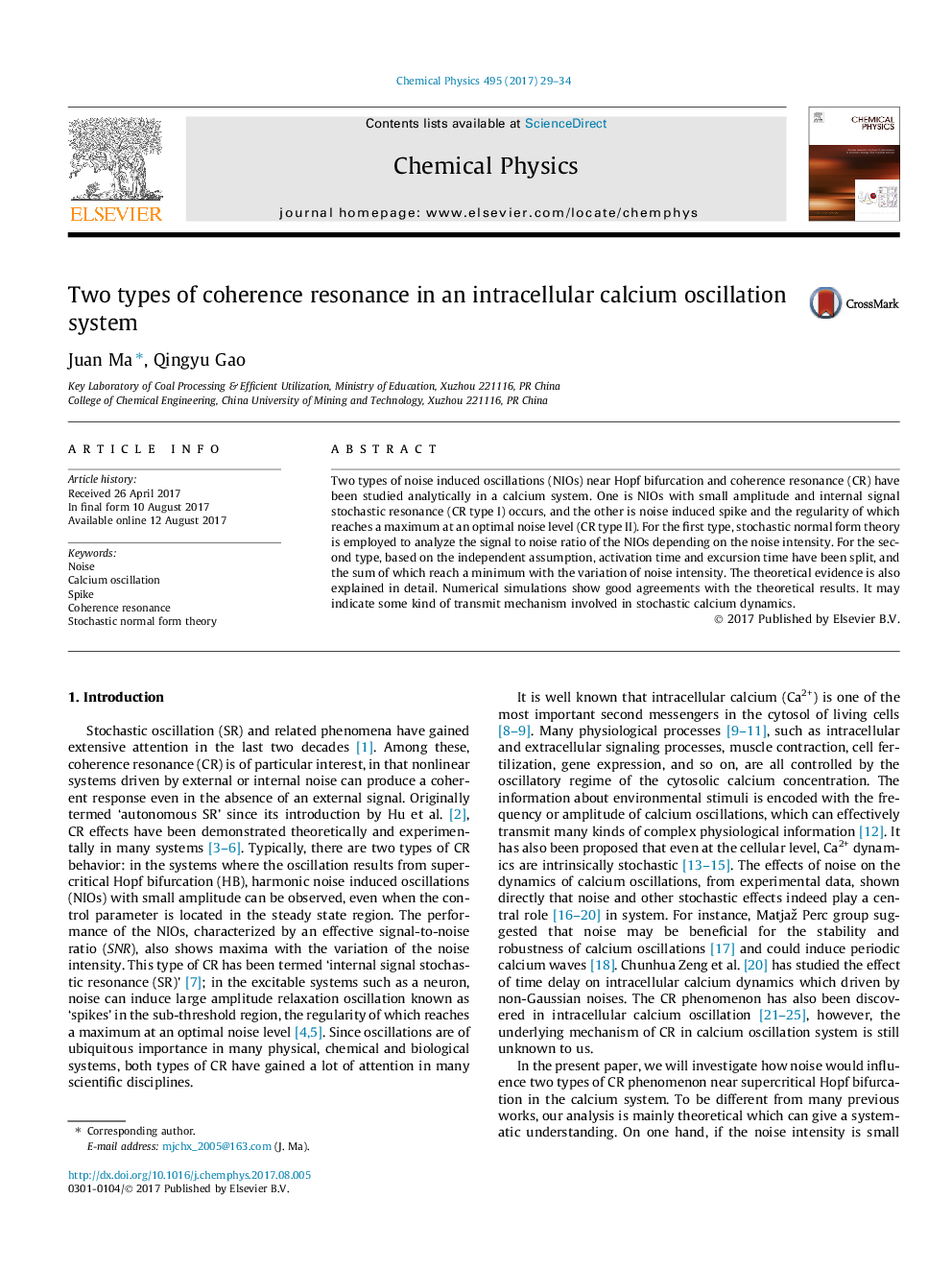| Article ID | Journal | Published Year | Pages | File Type |
|---|---|---|---|---|
| 5372577 | Chemical Physics | 2017 | 6 Pages |
â¢The mechanism of 'two types of coherent resonance' have been studied analytically.â¢Stochastic normal form theory is employed to analyze coherent resonance type I.â¢Coherent resonance type II is explained based on the independent assumption.â¢Numerical simulations show good agreements with the theoretical results.
Two types of noise induced oscillations (NIOs) near Hopf bifurcation and coherence resonance (CR) have been studied analytically in a calcium system. One is NIOs with small amplitude and internal signal stochastic resonance (CR type I) occurs, and the other is noise induced spike and the regularity of which reaches a maximum at an optimal noise level (CR type II). For the first type, stochastic normal form theory is employed to analyze the signal to noise ratio of the NIOs depending on the noise intensity. For the second type, based on the independent assumption, activation time and excursion time have been split, and the sum of which reach a minimum with the variation of noise intensity. The theoretical evidence is also explained in detail. Numerical simulations show good agreements with the theoretical results. It may indicate some kind of transmit mechanism involved in stochastic calcium dynamics.
Graphical abstractTwo types of coherence resonance (CR) have been studied analytically in a calcium oscillation system, and stochastic normal form theory and independent assumption are employed to analyze the underline mechanism of them. Numerical simulations show good agreements with the theoretical results.Download high-res image (85KB)Download full-size image
